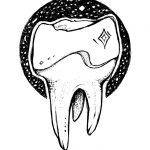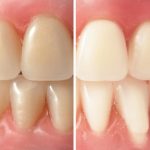What’s the ADA Do, Anyway?
You’ve seen it splashed on toothpaste tubes and mouthwash bottles: the American Dental Association’s (ADA) seal of approval. While the seal gives you some confidence that the product in front of you has been approved by experts, who exactly is the ADA and what does their seal of approval mean? To that end, what else does the ADA do?
Keep reading as we break down this professional organization and the work that it does for dental professionals, patients and the entire community.
What is the ADA?
The purpose of the ADA is to power the profession of dentistry and to assist our members in advancing the overall oral health of their patients. Today, the organization boasts more than 163,000 members from across the country. Founded in 1859, the ADA is the world’s largest and oldest national dental association and promotes good oral health to the public while representing the dental profession.
Its origins were humble. The ADA was founded by twenty-six dentists who represented various dental societies in the United States.
Today, the ADA prides itself of being a strong advocate for all its members through the promotion of the art and science of dentistry by supporting dental professionals through services like Find-a-Dentist, credentialing tools, Third Party Payer Concierge, contract review and much more.
At its core, the ADA’s mission is to ensure all member dentists have what they need when they need it to serve their communities.
What does the ADA advocate for?
The ADA is the country’s leading oral health advocate, and in that role it works to influence both the State and Federal government. They strive to influence ongoing policy that affects the practice of dentistry and public oral health. A sampling of what they advocate for on the Hill includes:
- The continued fluoridation of waters since studies have shown that it reduces tooth decay in children and adults by 25%.
- Healthcare reform, and ensuring that oral health is taken into consideration when changes are made at the federal level that deal with health insurance.
- Working with patients and the community to address the opioid crisis.
- Emphasizing prevention and education since it has been proven to be the most effective way to ensure optimal oral health is to prevent oral disease before it starts.
- The ADA also works closely with lawmakers, dental schools, scientific organizations, and others to ensure federal research agencies are well funded, their research investments reflect the needs of the dental profession, and the knowledge gained advances the oral health of the American public.
- The ADA continues working with policy makers, public health leaders, and others to help prevent oral cancer, pharyngeal cancer, and other oral diseases associated with tobacco use as well.
What is the Seal of Acceptance?
The ADA established rigorous guidelines for testing and advertising of dental products, and the first ADA Seal of Acceptance was awarded in 1931. Today, about 350 manufacturers participate in the voluntary program, and more than 1,300 products have received the Seal of Acceptance.
Not all products submitted qualify for the seal of acceptance. A product submission must include data from clinical and/or laboratory studies that demonstrate safety and efficacy according to product category requirements. If all requirements are met, the ADA Seal is awarded for a five-year period. If the composition of an Accepted product changes during the five-year agreement, the company must submit updated chemical and safety data before it can be marketed with the Seal. The Council may require additional testing if changes potentially affect the product’s safety or efficacy.
The Seal can be found on products ranging from bleaching products to toothbrushes to sugar free gum. If you are curious about your favorite products, here is an easy to use list that breaks down all products with the Seal of Acceptance.
Other services
The ADA offers other services that are meant to aid dentists in their practice. For example, the ADA offers cutting edge contenting education classes that help keep dentists at the top of their game.
The ADA also publishes clinical practice guidelines that highlight best practices. Clinical practice guidelines are the strongest resources to aid dental professionals in clinical decision making and help incorporate evidence gained through scientific investigation into patient care.
Finally, the ADA offers resources for aspiring dentists and dental students. Take a look at their website, you will definitely learn something new!






